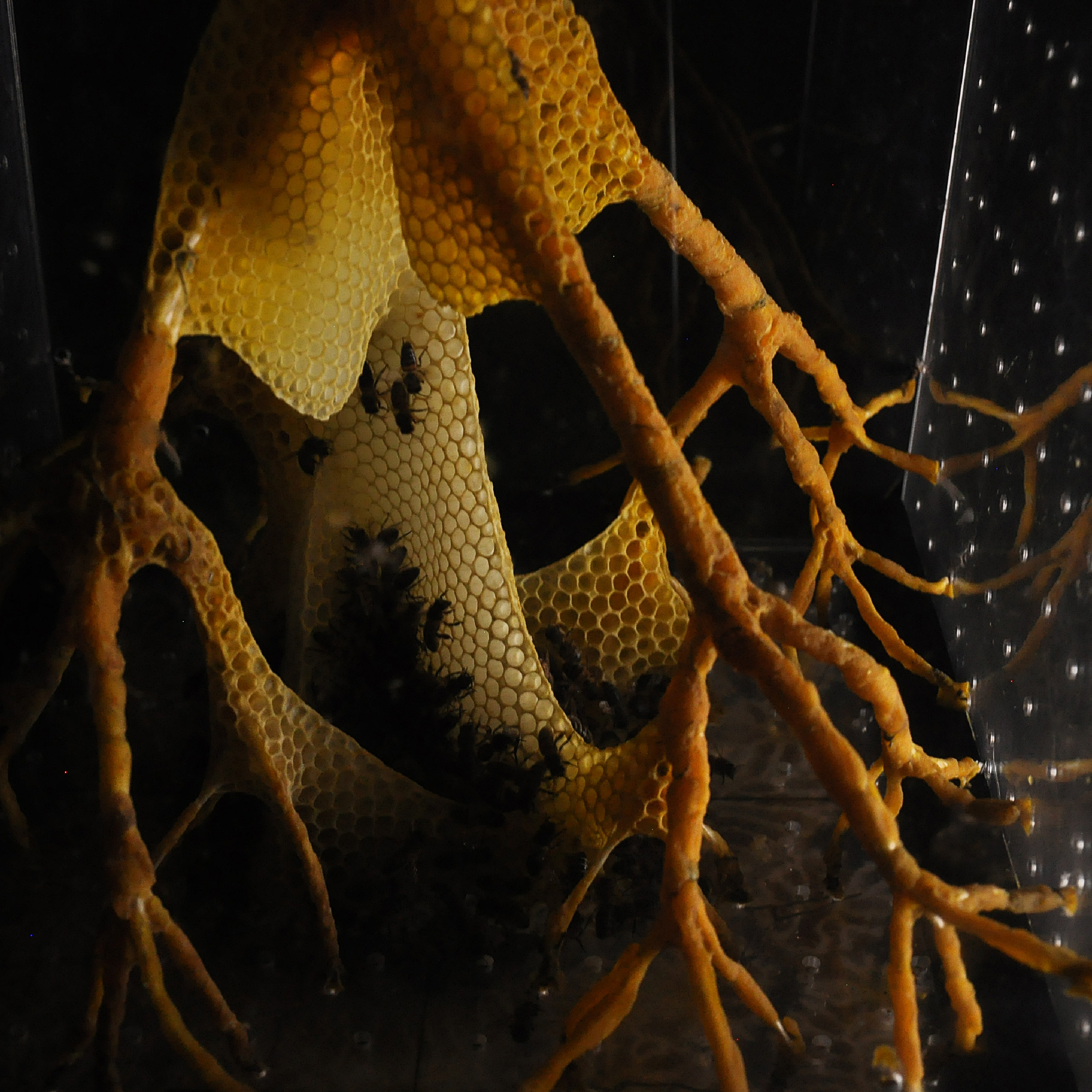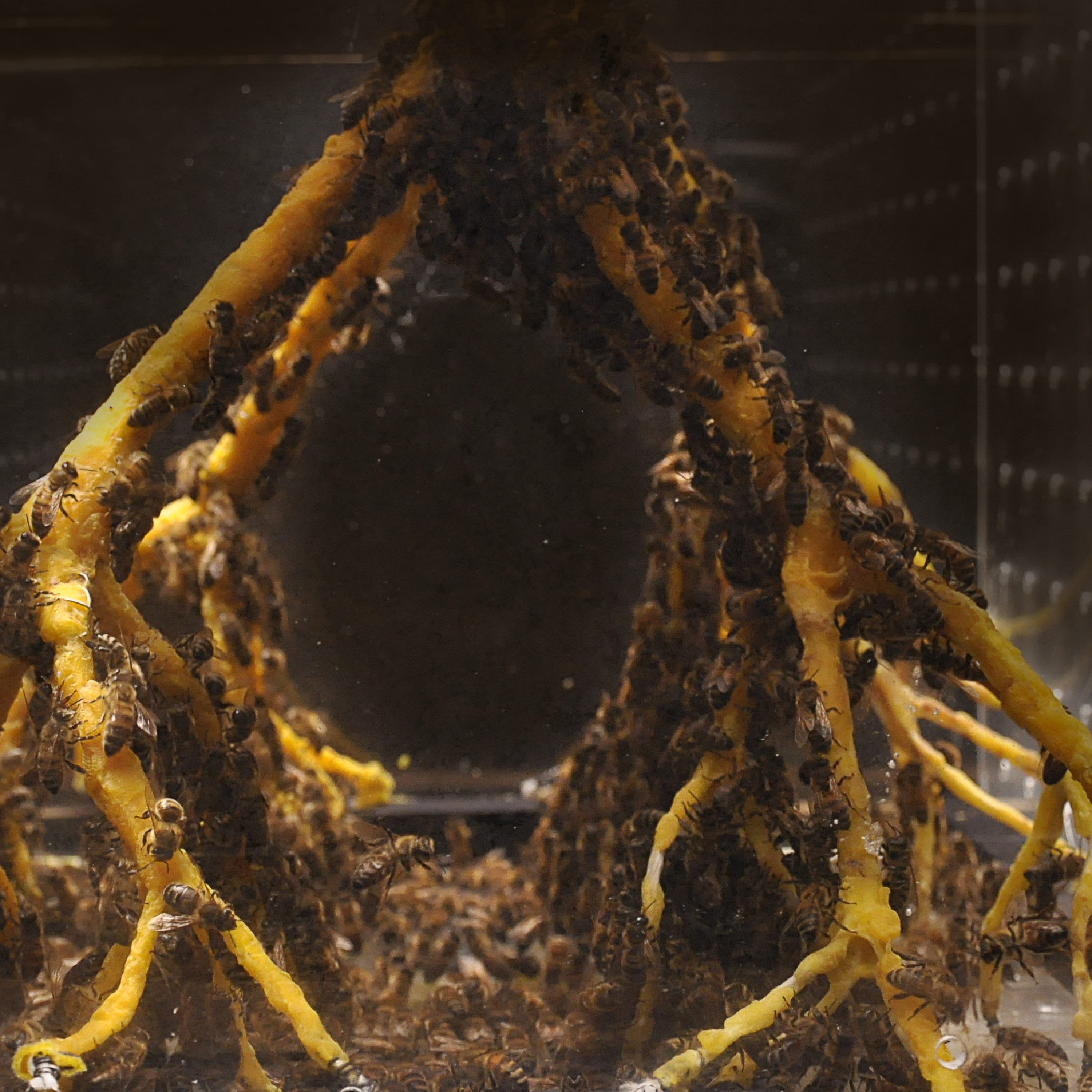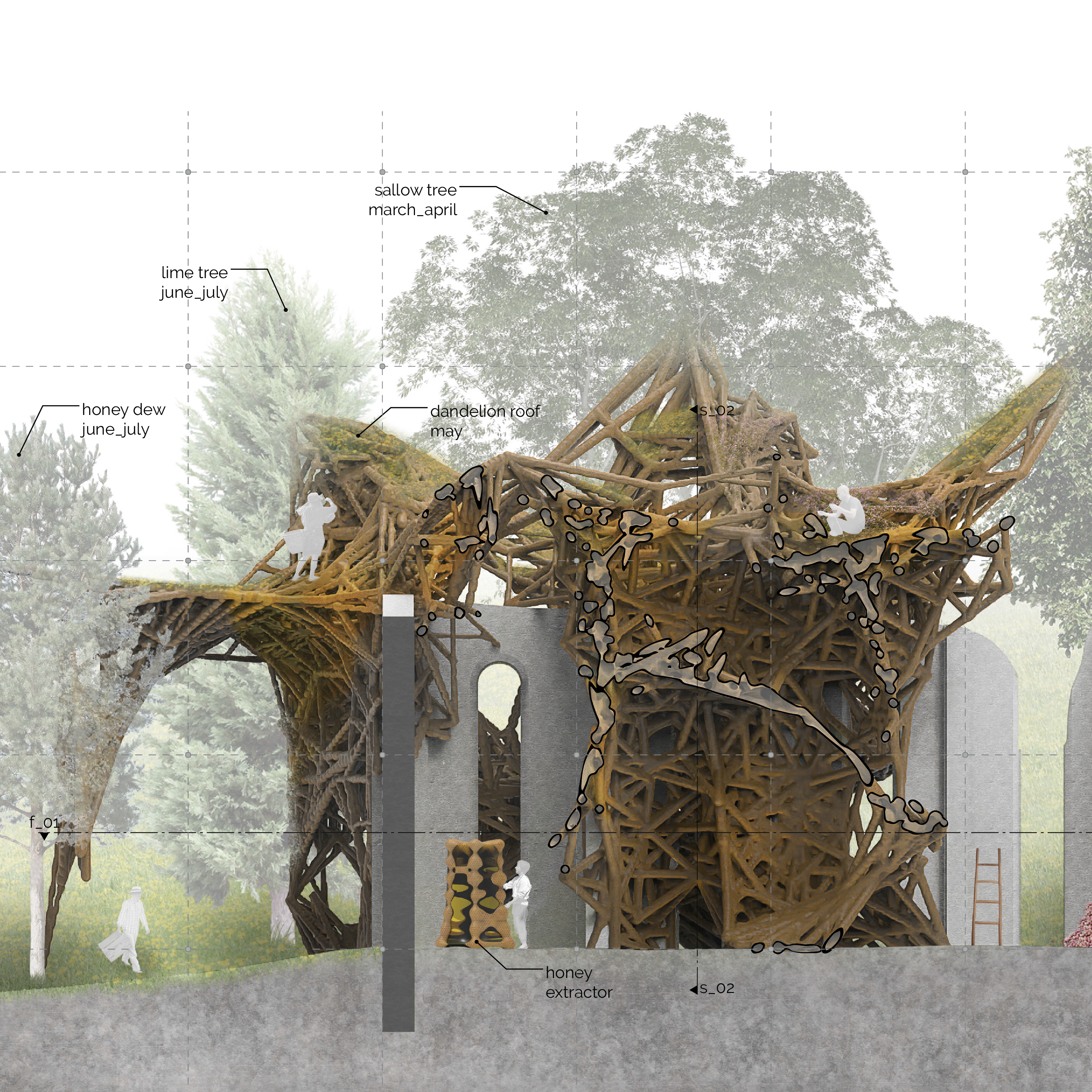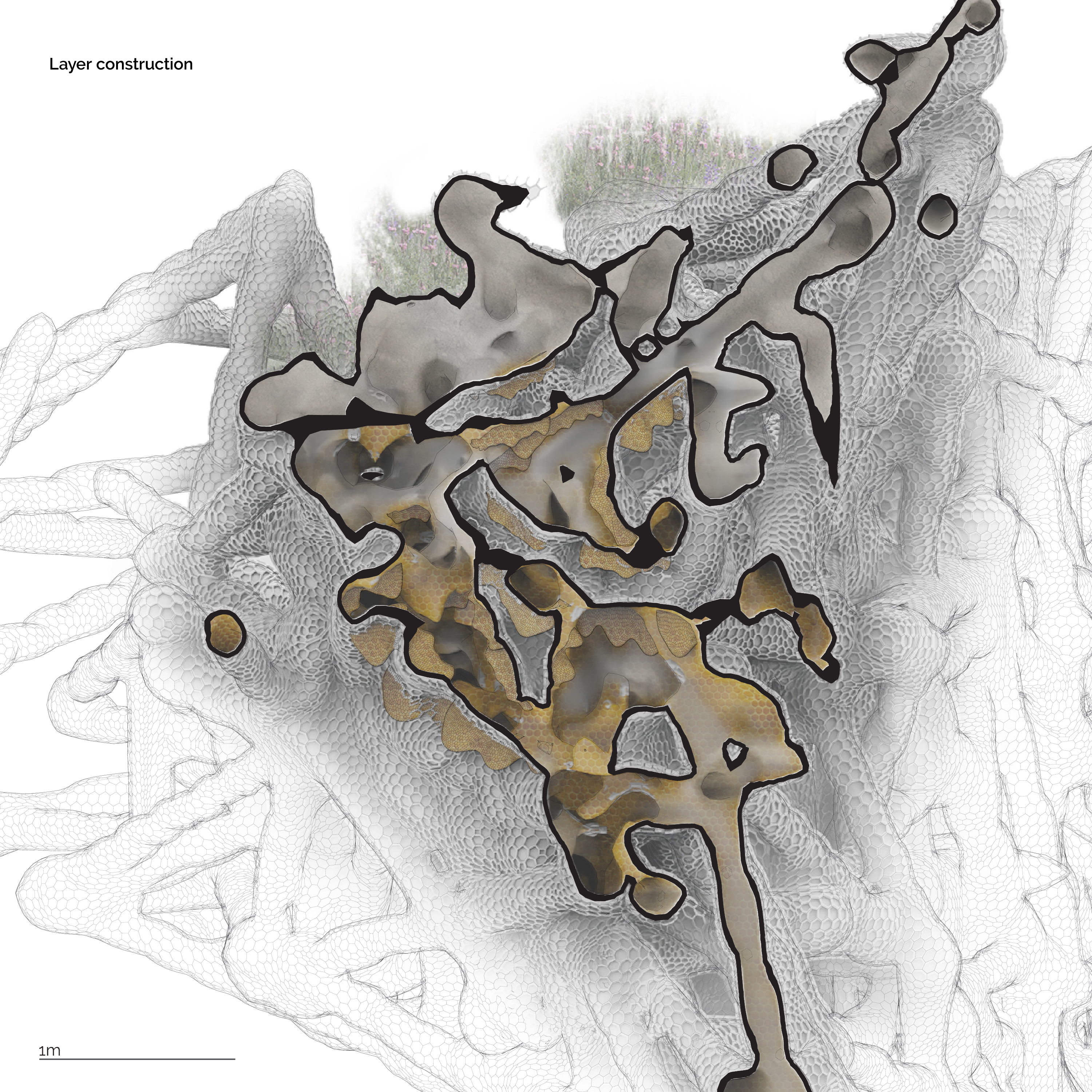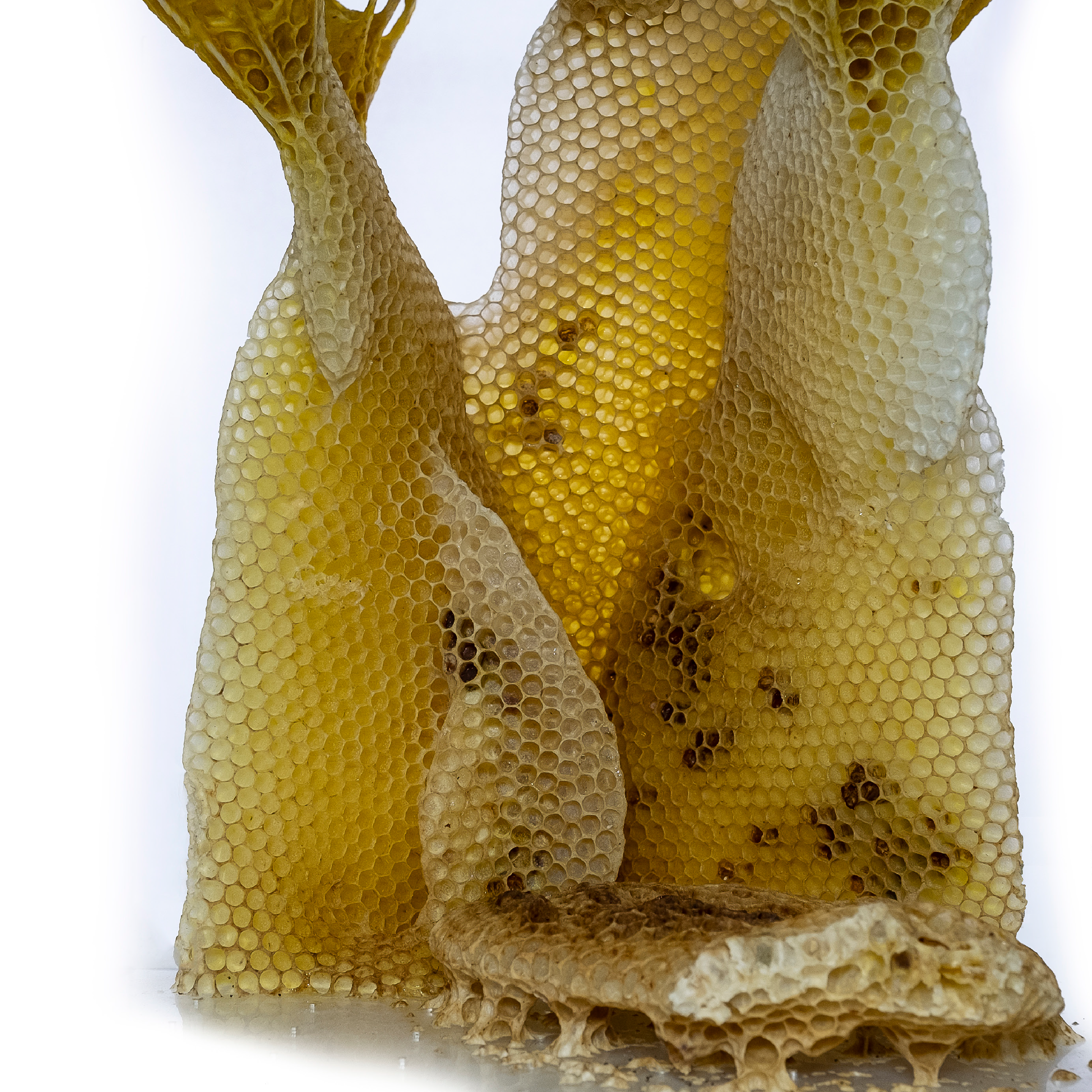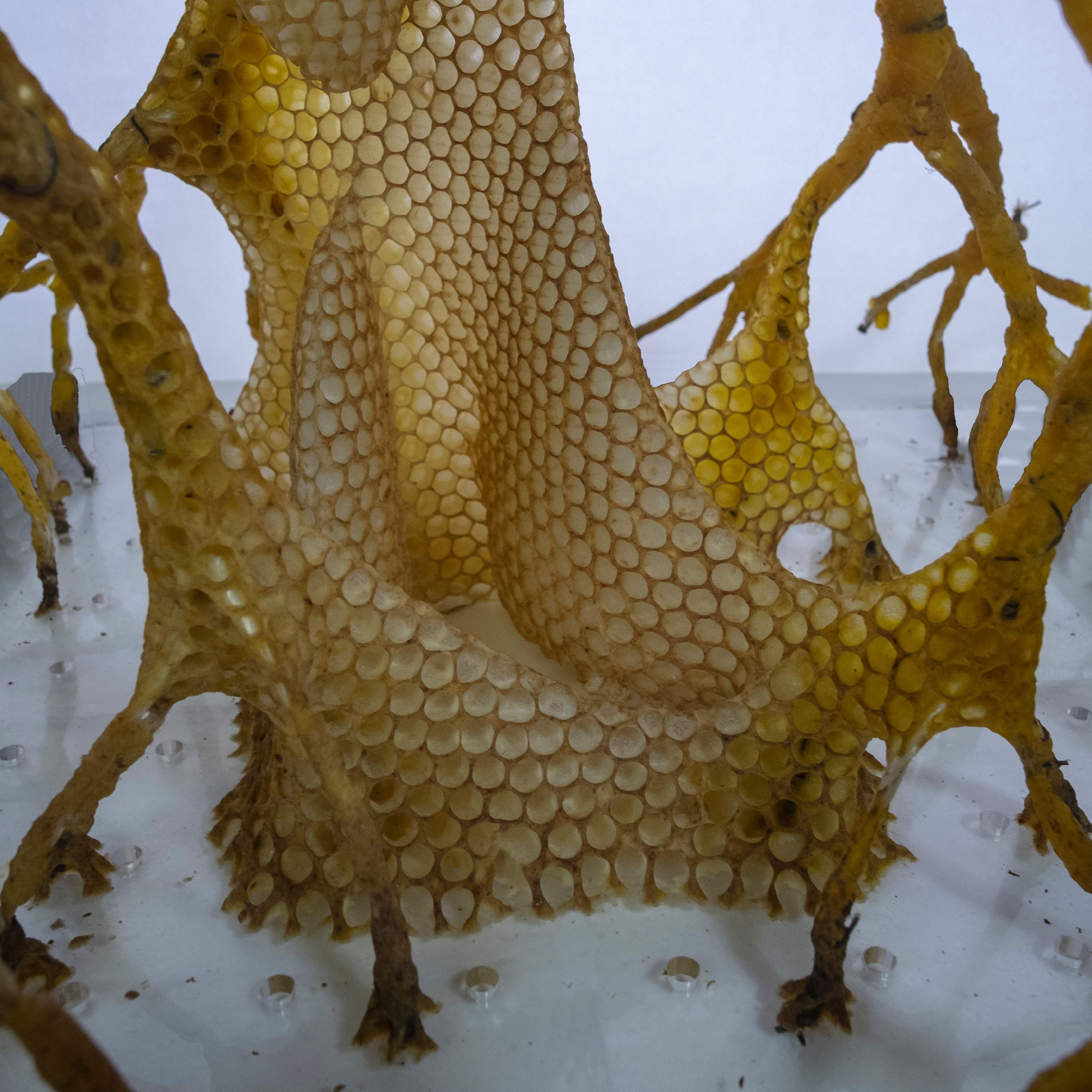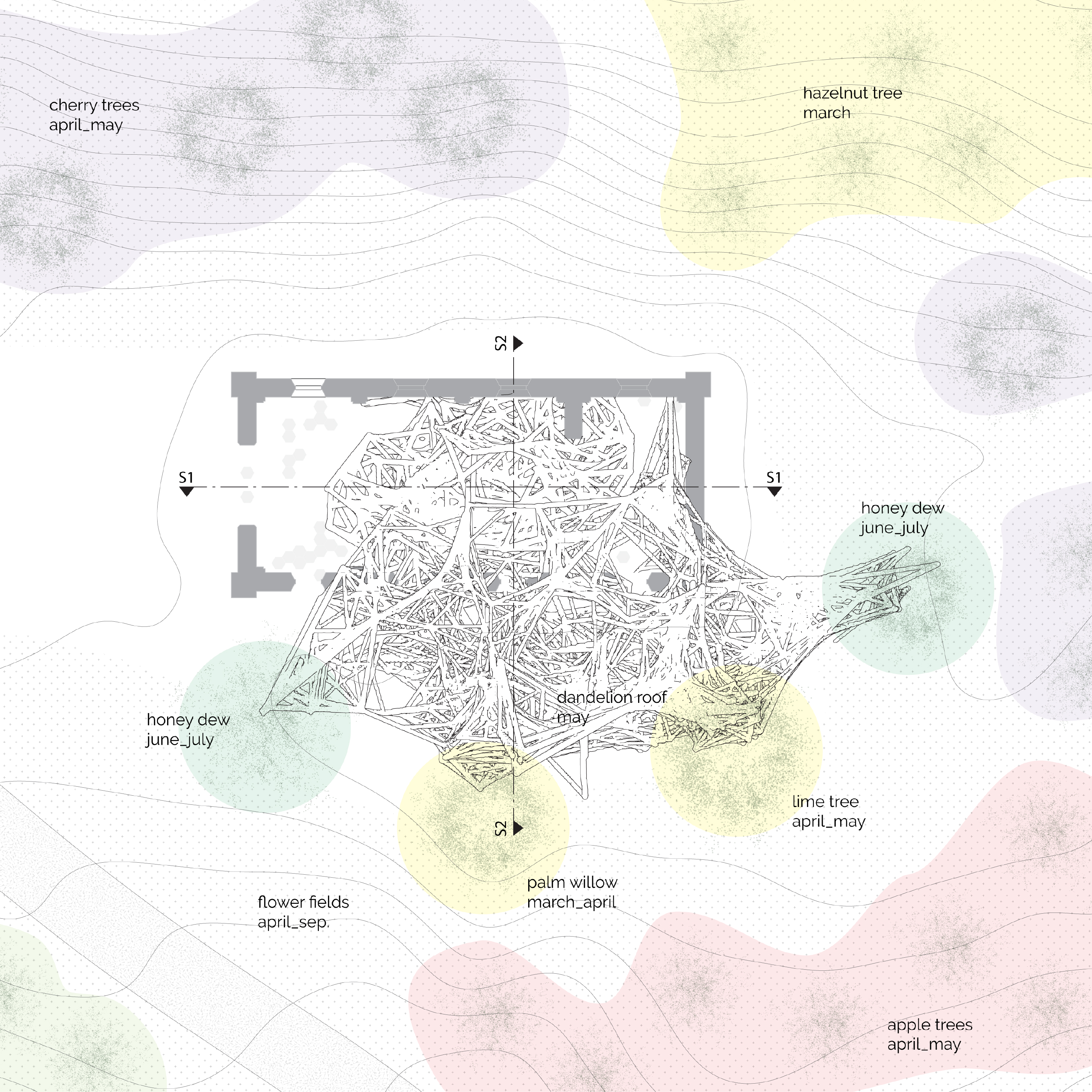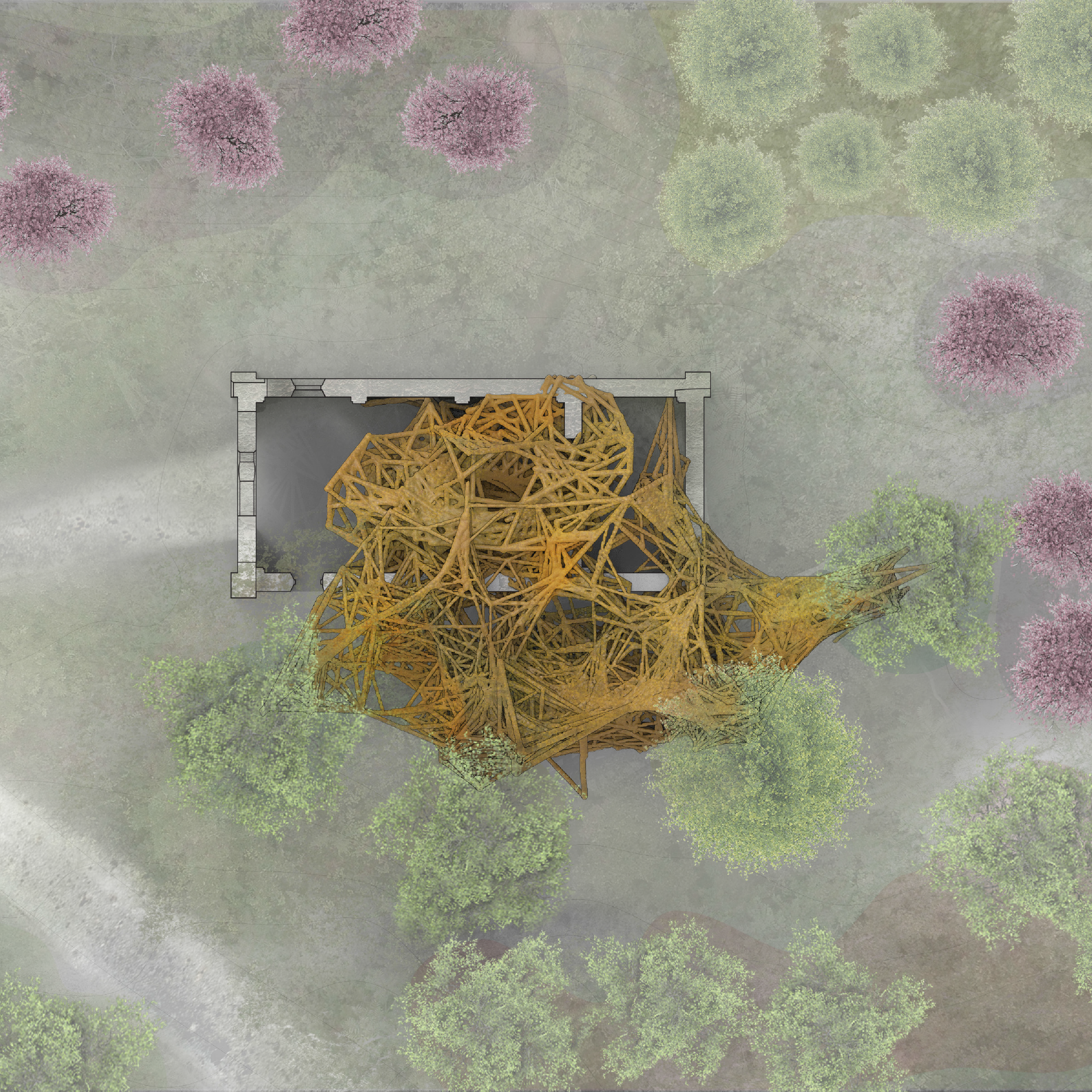The Organism of Bees
Master Thesis by Stefan Fuchs
Synthetic Landscape Lab February 2020
Supervision by
Univ.-Prof. Dr. Claudia Pasquero, Dipl. Eng., MA AA
Maria Kuptsova, MArch
This project wants to control the reversal process and determine the form in which the rehabilitation of bee hives measure should take place.
The aim is to use the collected analyses and data to take an adequate restoration measure that has both its qualitative properties and can also be applied quantitatively to various objects.
To digitize the ruins of Hörbrunn photogrammetrically axes were set at prominent points of the ruins. These axes are used by the software to correctly align the position and scale of the model.
To create a basis for the honeycombs, wax strings are stretched according to the 3d proximity system in the areas in which they are to be spread. The strings can be aligned accordingly to generate the desired form of growth. The more vertically the structures are stretched the steeper the honeycombs become. The classic honeycombs developed on the horizontal strings are laid on to the heart shape.
The top layer is used for the vegetation. It serves as a source of nourishment, shade and the underlying substrate stores water and moisture. The honeycombs in the lower area can be removed by the beekeepers for harvest. The honeycombs, which grow outwards in midsummer are also intended for this.










